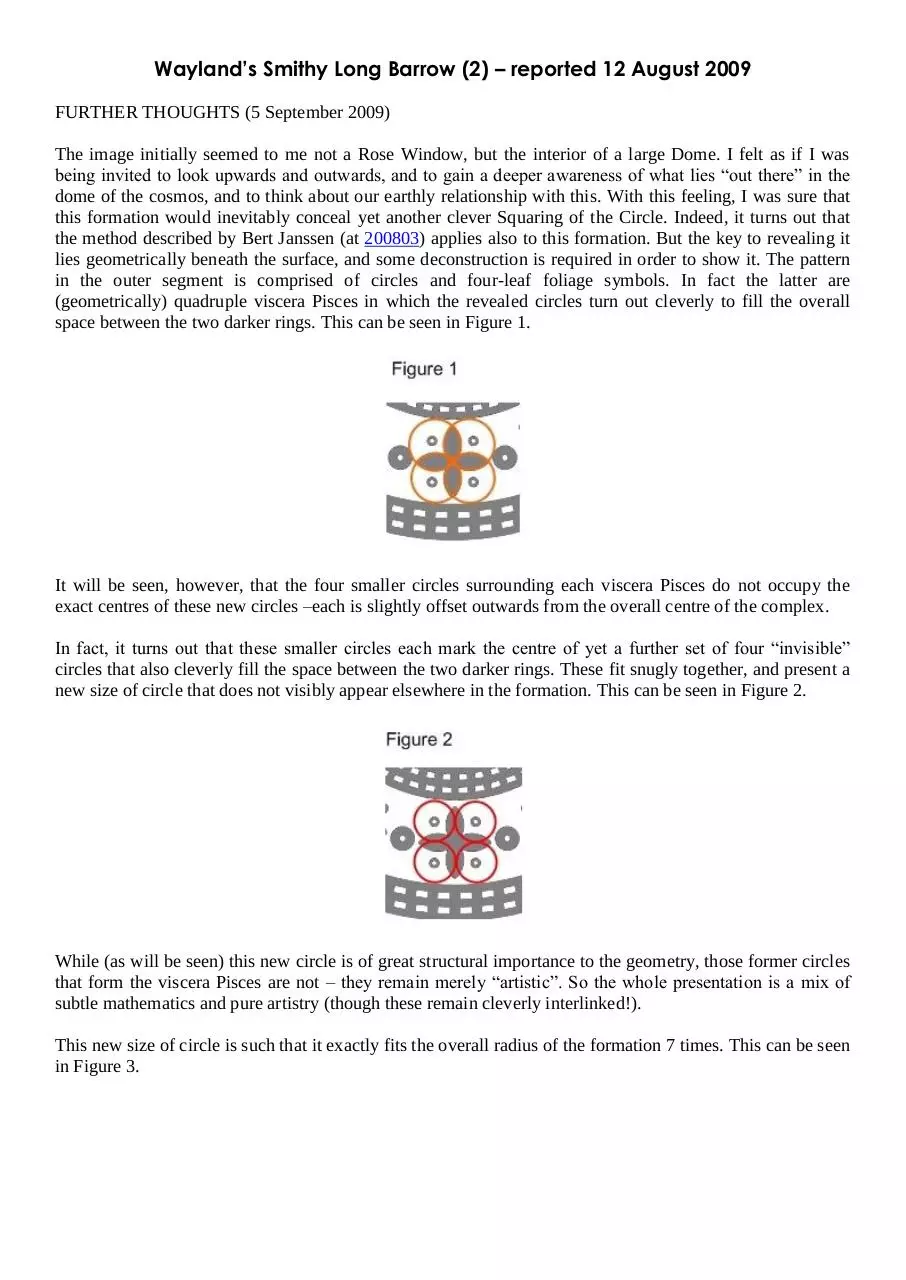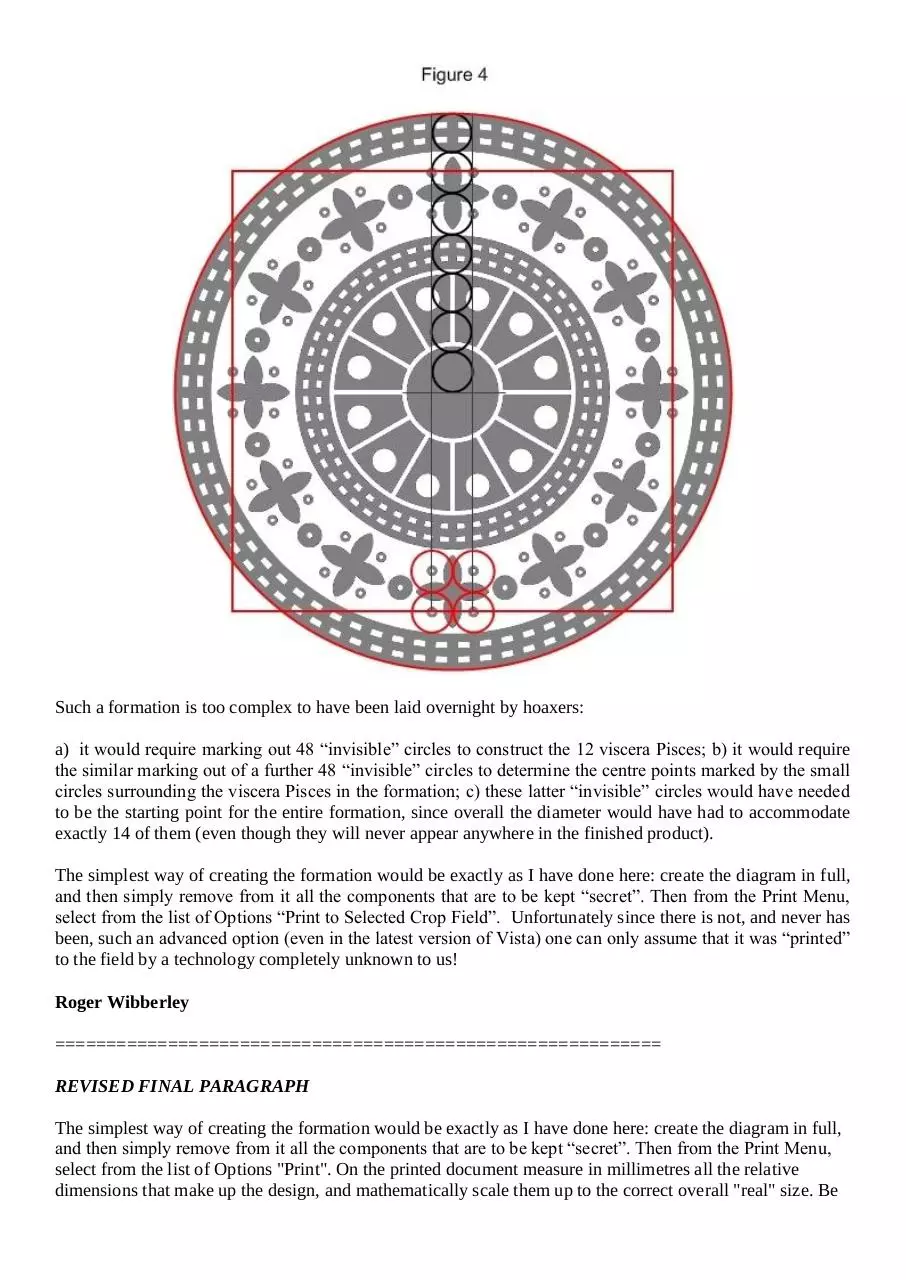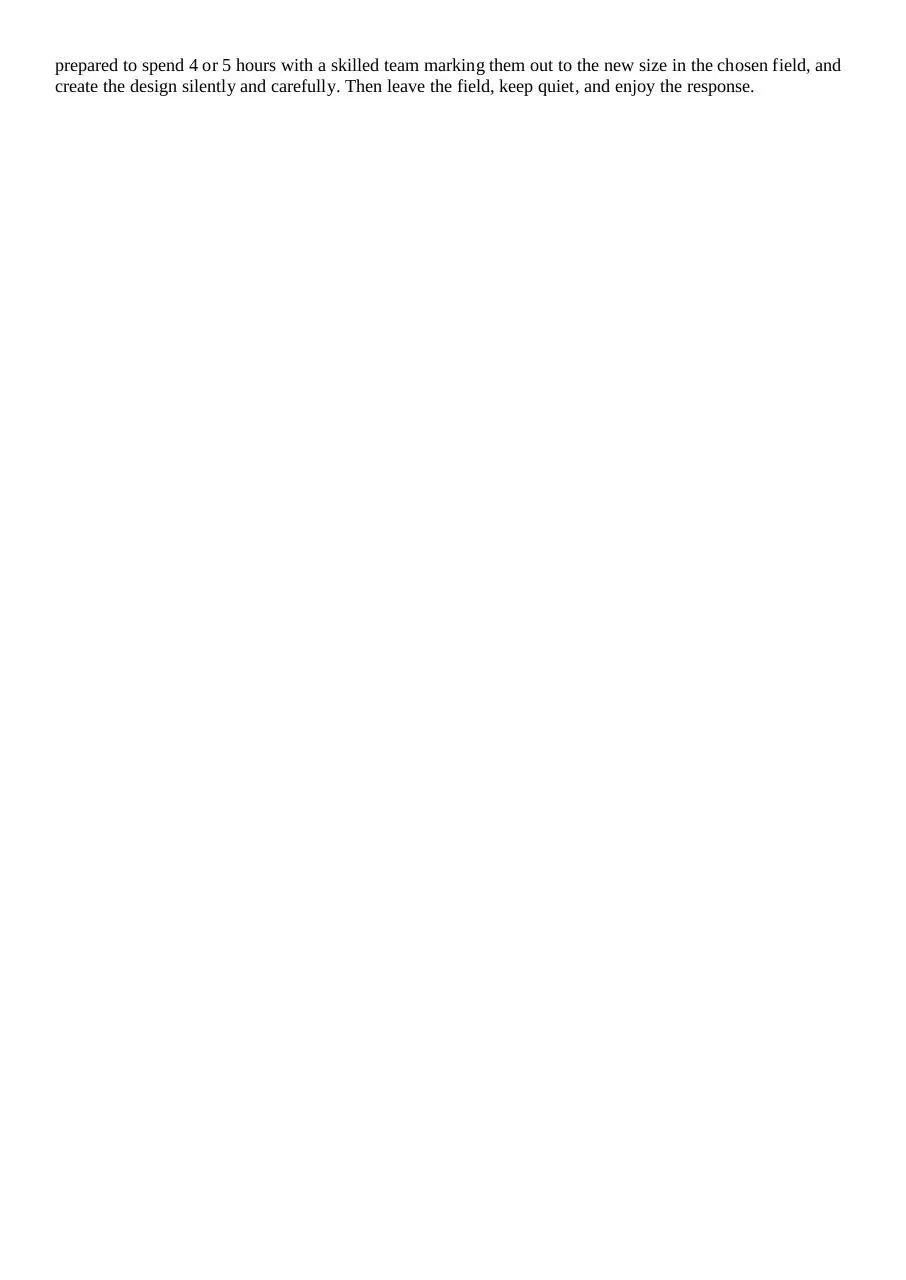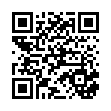Wayland (PDF)
File information
Author: Wibberley
This PDF 1.5 document has been generated by Microsoft® Office Word 2007, and has been sent on pdf-archive.com on 04/10/2011 at 15:15, from IP address 212.139.x.x.
The current document download page has been viewed 1368 times.
File size: 241.99 KB (4 pages).
Privacy: public file




File preview
Wayland’s Smithy Long Barrow (2) – reported 12 August 2009
FURTHER THOUGHTS (5 September 2009)
The image initially seemed to me not a Rose Window, but the interior of a large Dome. I felt as if I was
being invited to look upwards and outwards, and to gain a deeper awareness of what lies “out there” in the
dome of the cosmos, and to think about our earthly relationship with this. With this feeling, I was sure that
this formation would inevitably conceal yet another clever Squaring of the Circle. Indeed, it turns out that
the method described by Bert Janssen (at 200803) applies also to this formation. But the key to revealing it
lies geometrically beneath the surface, and some deconstruction is required in order to show it. The pattern
in the outer segment is comprised of circles and four-leaf foliage symbols. In fact the latter are
(geometrically) quadruple viscera Pisces in which the revealed circles turn out cleverly to fill the overall
space between the two darker rings. This can be seen in Figure 1.
It will be seen, however, that the four smaller circles surrounding each viscera Pisces do not occupy the
exact centres of these new circles –each is slightly offset outwards from the overall centre of the complex.
In fact, it turns out that these smaller circles each mark the centre of yet a further set of four “invisible”
circles that also cleverly fill the space between the two darker rings. These fit snugly together, and present a
new size of circle that does not visibly appear elsewhere in the formation. This can be seen in Figure 2.
While (as will be seen) this new circle is of great structural importance to the geometry, those former circles
that form the viscera Pisces are not – they remain merely “artistic”. So the whole presentation is a mix of
subtle mathematics and pure artistry (though these remain cleverly interlinked!).
This new size of circle is such that it exactly fits the overall radius of the formation 7 times. This can be seen
in Figure 3.
Following the method outlined by Bert Janssen (see above link), if the overall radius of the formation is
deemed to be “1”, then its overall circumference will equal 2 x Pi. For a square to have the same perimeter
as the circle, each of its sides must have a value of 11/7, the four sides together thus equalling 2*(22/7). This
will mean that half the length of one side will equal 5.5/7.
So, of the seven stacked circles in Figure 3, the point midway between the end of circle 5 and the end of
circle 6 will mark the position (5.5/7) of the edge of the square being sought. This “5.5/7” position coincides
with remarkable clarity (and pleasing inevitability) with the positions of the two outer small circles that
surround the four-leaf patterns.
Figure 4 shows how, from this geometric construction, the squaring of the circle is achieved.
Such a formation is too complex to have been laid overnight by hoaxers:
a) it would require marking out 48 “invisible” circles to construct the 12 viscera Pisces; b) it would require
the similar marking out of a further 48 “invisible” circles to determine the centre points marked by the small
circles surrounding the viscera Pisces in the formation; c) these latter “invisible” circles would have needed
to be the starting point for the entire formation, since overall the diameter would have had to accommodate
exactly 14 of them (even though they will never appear anywhere in the finished product).
The simplest way of creating the formation would be exactly as I have done here: create the diagram in full,
and then simply remove from it all the components that are to be kept “secret”. Then from the Print Menu,
select from the list of Options “Print to Selected Crop Field”. Unfortunately since there is not, and never has
been, such an advanced option (even in the latest version of Vista) one can only assume that it was “printed”
to the field by a technology completely unknown to us!
Roger Wibberley
===========================================================
REVISED FINAL PARAGRAPH
The simplest way of creating the formation would be exactly as I have done here: create the diagram in full,
and then simply remove from it all the components that are to be kept “secret”. Then from the Print Menu,
select from the list of Options "Print". On the printed document measure in millimetres all the relative
dimensions that make up the design, and mathematically scale them up to the correct overall "real" size. Be
prepared to spend 4 or 5 hours with a skilled team marking them out to the new size in the chosen field, and
create the design silently and carefully. Then leave the field, keep quiet, and enjoy the response.
Download Wayland
Wayland.pdf (PDF, 241.99 KB)
Download PDF
Share this file on social networks
Link to this page
Permanent link
Use the permanent link to the download page to share your document on Facebook, Twitter, LinkedIn, or directly with a contact by e-Mail, Messenger, Whatsapp, Line..
Short link
Use the short link to share your document on Twitter or by text message (SMS)
HTML Code
Copy the following HTML code to share your document on a Website or Blog
QR Code to this page

This file has been shared publicly by a user of PDF Archive.
Document ID: 0000034142.